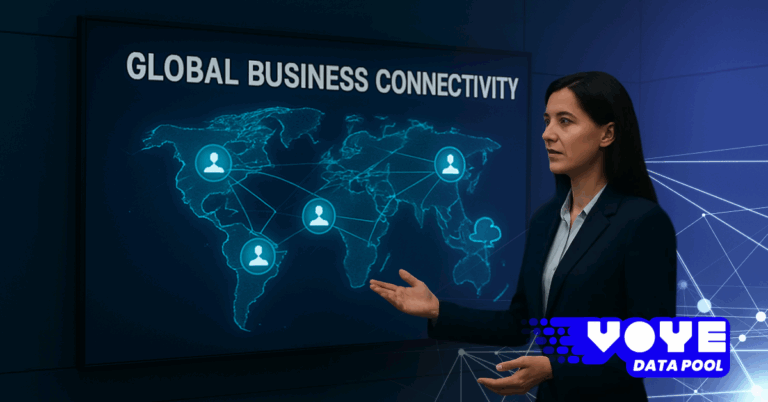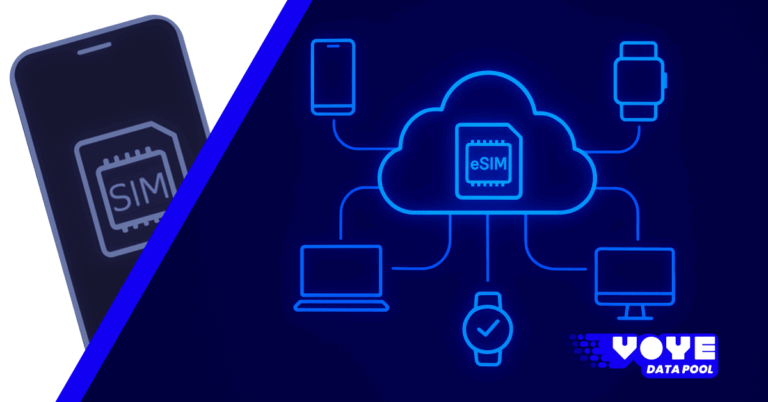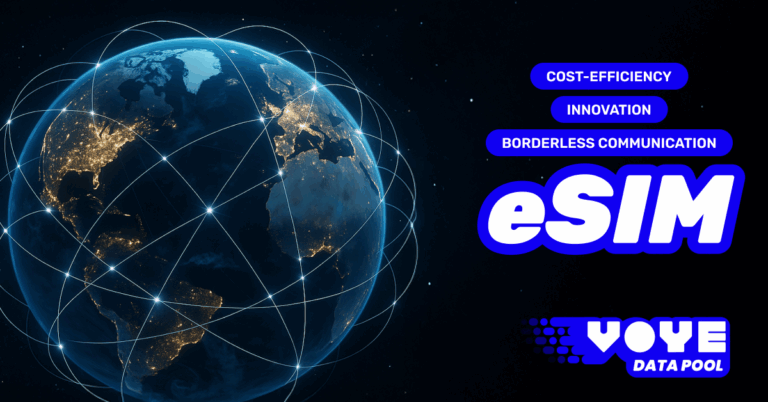From OPEX to Strategy: How Data Savings Fuel Expansion Projects
Enterprises today are rethinking how operational spending drives growth. By transforming data savings into strategic capital, organizations can accelerate expansion and innovation without increasing budgets. This shift from OPEX to opportunity highlights how smarter connectivity and cost optimization create tangible, scalable business value.

In today’s hyper-competitive landscape, organizations are under constant pressure to do more with less. Operational expenditures (OPEX) continue to consume a significant share of budgets, often leaving limited room for innovation, market entry, and long-term growth. Yet, forward-thinking enterprises are discovering a hidden catalyst: data savings. By optimizing how they provision, manage, and utilize connectivity resources, companies are finding that what was once a sunk cost can transform into a funding engine for strategic expansion projects.
For global businesses, connectivity is no longer a luxury—it is the bloodstream of operations. From remote collaboration and cloud workloads to mobile workforce travel and customer engagement, reliable internet is non-negotiable. But traditional roaming and fragmented telecom contracts lead to inflated OPEX that stifles agility. Enter solutions like Voye Data Pool, a secure platform that empowers enterprises to instantly activate, manage, and monitor eSIMs across 150+ countries. This shift doesn’t just cut costs; it redefines strategy.
This blog explores how data savings can be redirected from recurring operational overhead into capital for expansion projects, unlocking competitive advantage in ways CFOs, CIOs, and HR leaders can no longer ignore.
The Traditional OPEX Trap
1. The Heavy Burden of Connectivity Costs
International roaming and legacy SIM management models typically account for substantial OPEX in globally distributed organizations. Airlines, consulting firms, logistics operators, and technology service providers often report six-figure annual roaming bills. This recurring drain limits the organization’s ability to allocate capital toward innovation or market growth.
2. OPEX vs. CAPEX in Strategic Planning
Operating expenditures cover day-to-day running costs, while capital expenditures (CAPEX) fund long-term assets like new facilities, R&D projects, or acquisitions. Executives often find themselves trapped in a cycle where inflated OPEX prevents investment in CAPEX-driven expansion. Without structural change, companies face stagnant growth despite strong revenue.
3. The CFO’s Dilemma
Finance leaders are tasked with reducing OPEX without compromising operational excellence. Yet cutting corners in connectivity risks downtime, reduced productivity, and reputational damage. What they need is not a cost-cutting exercise but a reallocation strategy—where smarter spend frees capital for more ambitious initiatives.
Data Savings as a Strategic Lever
1. Why Connectivity Optimization Matters
Connectivity is one of the few operational costs that scales exponentially with workforce mobility and international expansion. Traditional SIM cards require procurement, shipping, activation, and management at a country level, creating administrative inefficiencies alongside inflated roaming costs.
2. eSIM and Data Pooling as a Breakthrough
By adopting eSIM technology and centralized data pooling platforms like Voye Data Pool, organizations can eliminate roaming inefficiencies, enforce cost limits, and unify management dashboards. The result is data savings of up to 90%, coupled with real-time transparency.
3. Turning Savings into Strategy
These savings are not just marginal—they are transformational. For example:
- A consulting firm saving $1.2M annually on roaming can redirect funds into opening a new regional office.
- A logistics provider cutting mobile data OPEX by 70% can reinvest into IoT-enabled fleet tracking.
- A technology company lowering connectivity overhead can funnel resources into R&D, talent acquisition, or sustainability projects.
Building the Business Case
1. Financial Efficiency
Enterprises that shift from legacy roaming to eSIM-based pools reduce unpredictability in telecom bills. Predictable, transparent usage costs allow CFOs to create cleaner forecasts and allocate freed-up capital with confidence.
2. Operational Resilience
With centralized management, IT teams no longer waste hours on SIM distribution or troubleshooting regional inconsistencies. Reduced administrative overhead translates into higher IT efficiency and faster time-to-market for expansion initiatives.
3. Risk Mitigation
International data usage often exposes businesses to bill shocks and compliance risks. Platforms like Voye Data Pool enforce cost caps, monitor usage, and ensure GDPR-compliant management, protecting enterprises as they scale into new geographies.
4. Strategic Alignment
Perhaps most importantly, shifting OPEX savings into expansion projects demonstrates strategic alignment between finance, IT, and HR. It shows that cost optimization isn’t about austerity; it’s about enabling growth.

Seamless eSIM Connectivity for Enterprises
Activate, manage, and scale eSIMs with ease.
Use Cases: Data Savings Fueling Expansion
1. Market Entry in Emerging Economies
When companies evaluate market expansion into regions like Southeast Asia, Eastern Europe, or Africa, one of the first hurdles is operational cost predictability. By lowering connectivity OPEX, organizations can reallocate budget toward local marketing campaigns, recruitment, and partnerships.
Example:
A global retail chain reduces its international data costs by 80% with Voye Data Pool. The savings directly fund its pilot expansion in Vietnam, covering store setup, local staff training, and digital infrastructure without requiring new debt.
2. Digital Transformation Projects
Organizations embarking on cloud migrations, AI integration, or cybersecurity upgrades often lack the financial bandwidth. Redirecting data savings becomes a self-funding model for digital transformation.
Example:
A European law firm implements eSIM management across its traveling attorneys, saving €600K annually. These funds are allocated to AI-driven document review tools, improving billable efficiency and client satisfaction.
3. Workforce Mobility Programs
Employee connectivity is central to productivity. Yet, traditional models force companies to overspend on mobile allowances or reimbursements. By cutting excess OPEX, HR teams can reinvest in wellness programs, learning initiatives, or global talent acquisition.
Example:
A multinational NGO saves $450K yearly on staff roaming. With those funds, it establishes a global leadership training program for emerging managers.
4. Sustainability Initiatives
Corporate sustainability projects often get delayed due to lack of funding. Redirecting operational savings enables organizations to deliver ESG commitments without impacting core budgets.
Example:
A logistics company saves 70% on fleet connectivity. These savings are redirected to electrification of delivery vans, directly contributing to carbon reduction targets.
5. Mergers & Acquisitions
During M&A activity, organizations face integration costs that can strain liquidity. By harnessing recurring savings, companies create a financial cushion to smooth transitions.
The CFO’s Playbook: Redirecting OPEX to Growth
Step 1: Audit Current Data Spending
Begin with a baseline analysis of international connectivity expenses. Include hidden costs like procurement delays, employee reimbursements, and downtime from coverage gaps.
Step 2: Implement Smart Connectivity Solutions
Deploy centralized eSIM provisioning with tools like Voye Data Pool. Establish usage alerts, cost caps, and real-time dashboards.
Step 3: Quantify Savings and Create Expansion Fund
Calculate the monthly and annual savings from reduced OPEX. Formalize a mechanism to redirect these funds into a dedicated Expansion Budget Pool.
Step 4: Align with Strategic Goals
Prioritize which projects—new offices, R&D, sustainability—align most with your 3- to 5-year strategic roadmap. Demonstrate ROI by mapping data savings directly to strategic milestones.
Step 5: Communicate Across Stakeholders
Ensure CFOs, CIOs, and HR leaders communicate the value of OPEX optimization as a growth enabler. This alignment fosters buy-in and accelerates execution.
Why Voye Data Pool is the Enabler
- Instant Activation: Deploy eSIMs globally without shipping delays.
- Centralized Management: Control usage, cost limits, and user assignments from one secure dashboard.
- Global Coverage: 150+ countries supported, ensuring employees stay connected wherever they travel.
- Predictable Costs: Eliminate roaming surprises with transparent billing.
- Scalability: Whether you manage 50 employees or 50,000, the platform grows with you.
By embedding cost optimization into the core of workforce mobility, Voye Data Pool doesn’t just reduce OPEX—it enables companies to build their next chapter of growth.
The Strategic Impact of Reallocation
- Financial Flexibility – Freeing up millions in recurring costs creates strategic optionality.
- Competitive Advantage – Companies that reinvest faster outpace peers in innovation.
- Employee Empowerment – Seamless connectivity improves morale and productivity.
- Resilience – Organizations weather downturns more effectively with lean OPEX models.
- Sustainable Growth – Expansion is funded through efficiency, not debt or risky capital raises.
Conclusion
The journey from OPEX drain to strategic reinvestment is no longer theoretical—it’s happening across industries right now. Connectivity savings are enabling CFOs to fund market entry, CIOs to accelerate digital transformation, and HR leaders to enhance employee experiences.
For organizations ready to reimagine how they scale, the path forward is clear: stop viewing data as a recurring cost and start treating it as a strategic asset. With Voye Data Pool, enterprises gain not just cost control but the ability to convert those savings into expansion fuel—driving growth, resilience, and competitive edge in a world that rewards agility.



 7 min read
7 min read





